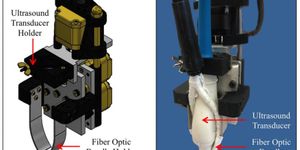Modeling the Blood Brain Barrier on a Chip
Organ chips aren’t a weird new musical instrument or bizarre snack food. They were made by researchers at the Wyss Institute at Harvard University to investigate human physiology. These synthetic chips are especially useful for studying parts of the human body that are very challenging to explore, like the protective barrier that surrounds our brain. That barrier has to allow essential nutrients and oxygen through, while preventing dangerous molecules like toxins from entering.
To learn more about it, they made two different kinds of chips; one mimics the blood-brain barrier, while another models the brain. You can learn more about what’s in those chips and see an illustration of the system in the video. The chips contain channels that mimic blood flow, and compartments of cells; the system can be used to study how molecules move into the barrier and the brain, and what can come out.
These chips have already been used to learn more about how glucose metabolites that enter the brain impact neurons, and the chemicals that are subsequently released.








